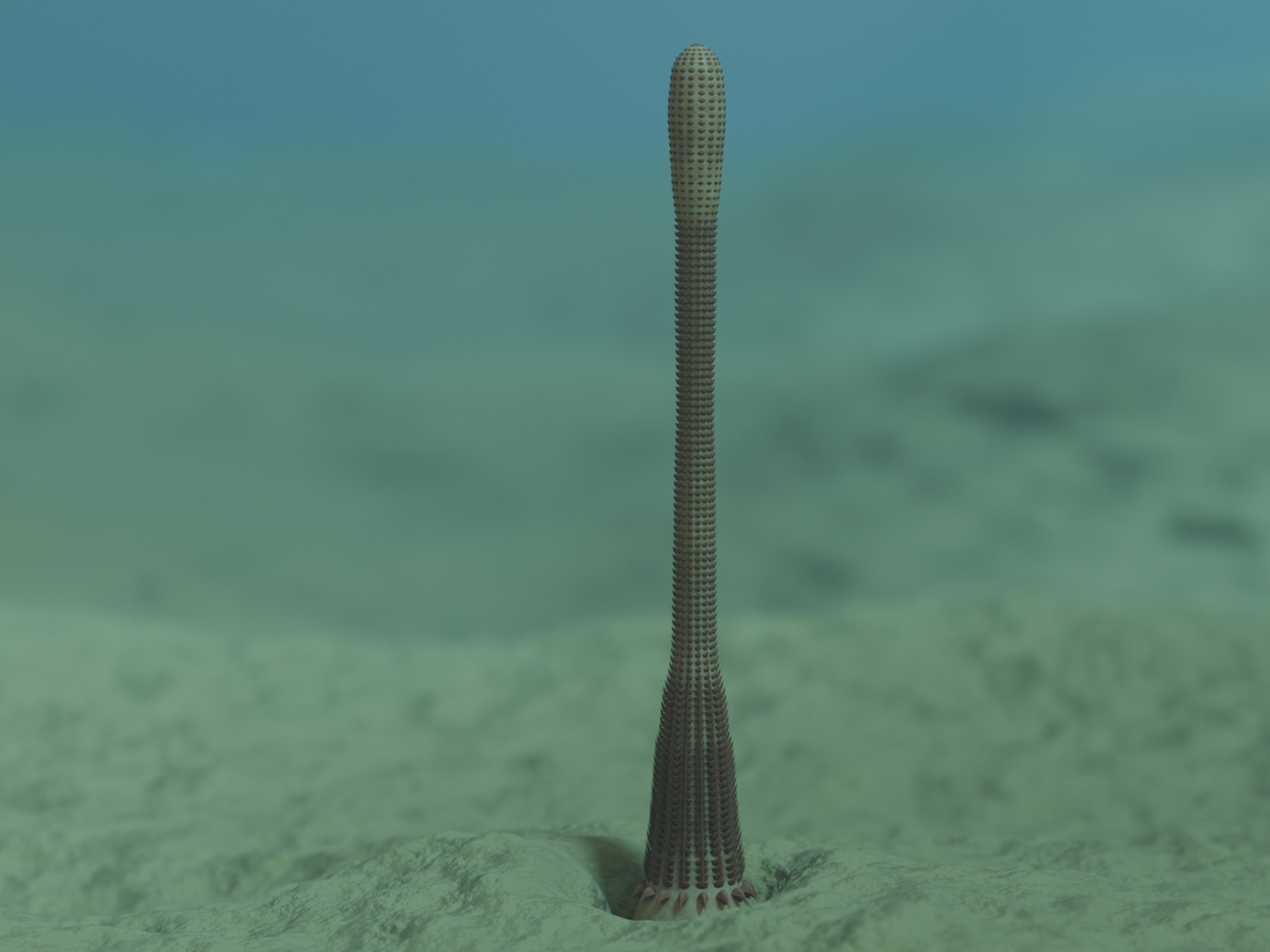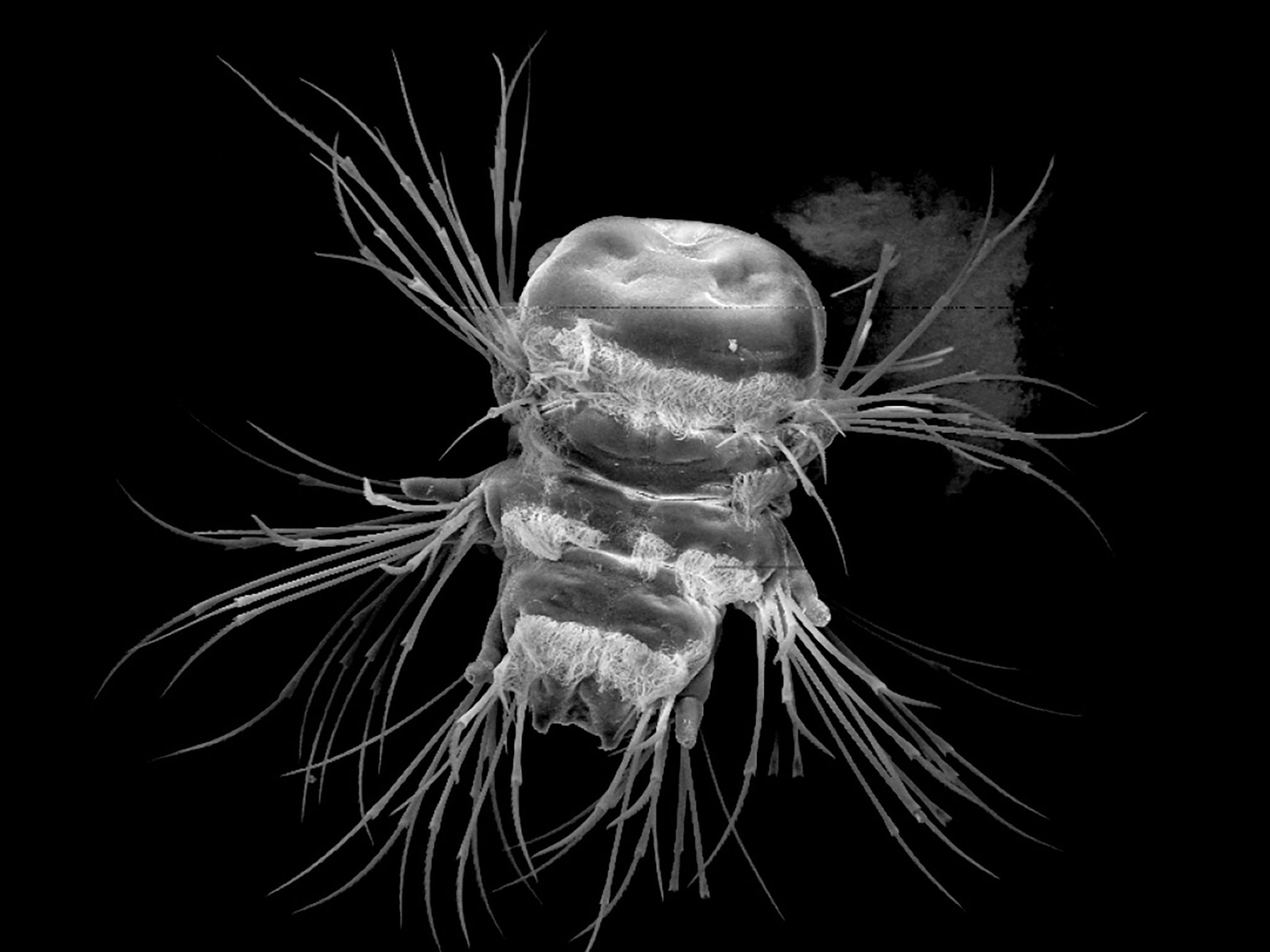
Giant Shrimplike Predator Was a Weakling After All
Supposedly shell-crushing jaws had little force, model shows.
A shrimplike creature thought to be Earth's first great predator was actually more of a worm-eating wuss, scientists say.
Anomalocaris canadensis glided along the seafloor about 500 million years ago, during Earth's Cambrian period. Nearly three feet (one meter) long, the shelled, bulging-eyed animal was giant compared to the other organisms living at the time. (See a prehistoric time line.)
Its unusual, O-shaped mouth was composed of 32 overlapping plates and protected by two spiky prongs that hung down from its face.
(Long Live the Anomalocaridids!)
Scientists had assumed the well-armored mouth could crush and feed on other hard-shelled organisms. For instance, the ancient beast was thought to feast on organisms such as trilobites, segmented invertebrates that also lived on the seafloor.
(Related picture: "Biggest Trilobite Sea Beasts Found ... in Swarms."
But paleontologist James "Whitey" Hagadorn, of the Denver Museum of Nature & Science, and his team may have quashed this theory using a 3-D computer model of the creature's mouth.
"We're basically saying that Anomalocaris may not have been the king of the jungle," Hagadorn said.
"That doesn't mean it's not a really cool fossil ... but all the popular animations and videos that show it ferociously swimming through the oceans and ripping apart hapless trilobites may need to be reevaluated."
Weak Jaws Couldn't Crack a Shrimp
The computer model of Anomalocaris' mouth showed it was not capable of cracking the soft shell of a modern shrimp—let alone the harder shells of most trilobite species.
In fact, it couldn't even fully close its mouth, according to the new research, which Hagadorn presented this week at the annual meeting of the Geological Society of America in Denver.
So while Anomalocaris may have been able to suck up very small or freshly molted— and thus soft—trilobites, "it had no chance in heck of biting through about 95 percent of trilobite shells. Its mouth would have broken first," Hagadorn said.
(Related: "Komodo Dragon's Bite Is 'Weaker Than a House Cat's.'")
He added that supporting evidence for the model's results can be seen in the fossils themselves. For example, the team also studied more than 400 fossilized Anomalocaris mouth parts and could not find any signs of chips or scratches, which would be expected if the creatures had been continually pulverizing hard shells.
Furthermore, there is no evidence from fossilized stomach contents or feces that Anomalocaris ate anything hard.
Instead of trilobites, Anomalocaris likely fed on something soft, Hagadorn said.
"One hypothesis is that it was eating soft worms, or maybe plankton, that it was combing out of the waters."




